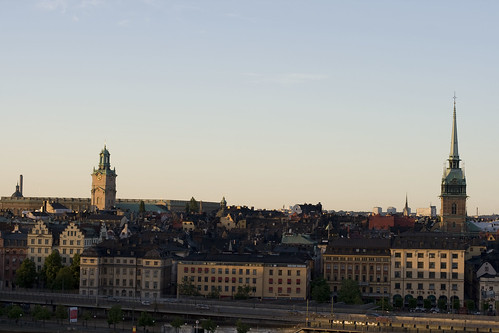Not long after I arrived home following the 2013 CESNUR conference, having spent some forty-odd hours door-to-door flying from Sweden to Australia, I tweeted “Great conference, beautiful country, lovely people”. The lengthy transit (dare I say ‘pilgrimage’) usually involved in making one’s way to CESNUR from the Antipodes is never too much to bear, for despite being small the conference is always one filled with enthusiastic colleagues keen to share their research and listen to that of others. It is a pleasing atmosphere, especially given that, as research foci, even now NRMs are sometimes regarded as topics of occasional frivolous scholarly fancy.
This concern for research area validity is a common theme for CESNUR conferences, especially the plenary sessions, perhaps speaking more of the type of resistance faced by the professorial leaders of the field in their formative years than that of early-career types like myself and many other attendees. The resistance currently is less methodological and more economic; ‘cults’ are somehow less dangerous, and with this decline in public interest there is less money. A recurrent problem for the field, to be sure, but one for which we should feel proud, for in part it comes from the confounding of the ‘cult’ paradigm so prominent in the 1980s and 1990s. This year in Falun, Sweden, thanks to the organisation and leadership of Liselotte Frisk, of Darlana University, and CESNUR managing director Massimo Introvigne, the social, political, and cultural importance of NRMs studies was evidenced by scholars ostensibly gathered to discuss change and religious movements. This theme was set by Eileen Barker’s opening plenary in which she noted the inevitable lifecycle changes that NRMs undergo: the deaths of founders, children and ageing converts, and new ideas within still putatively New Religious Movements. This was fittingly followed by J. Gordon Melton’s plenary on the very definition of NRMs, using Texas Pentacostalism as a test case. Melton argued that Pentecostalism, worldwide, can variously be categorised as a NRM, an establishing group, or an established and normalised group. Critically, Melton reminded conference attendees that ‘NRM’ signifies anything that is in competition with dominant religious milieu in any given setting. Conceived along a spectrum with dominance at one end and alienation/minority status at the other, NRMs are those groups we may observe occupying the later, often at the explicit behest of the established/dominant religious stakeholders.
This framework laid down some interesting questions that many other conference presenters picked up. Knut Melvaer and Margrethe Løøv (University of Bergen) presented some intriguing field data from Norway regarding self-designations by individuals at New Age fairs which gave some statistical data to long-held assumptions about what sort of beliefs people who describe themselves as ‘spiritual’ hold. Papers by David Webster (University of Gloucestershire) and Cimminnee Holt (Concordia University) were also notable for their concentration on the challenge to the scholar. Webster in particular noted that the NRMs scholars should not simply be concerned to observe and relay ‘objective’ information with which people may make their own decisions; scholars should also offer critical ethical judgements based on substantiated fact. This was serendipitously followed by Holt’s paper in which it was noted that such judgments tend to operate in the realm of the soundbite; and scholars shy away from anything less than a well referenced few thousand words. How to deal with these parallel problems in an increasingly mediatised, connected, and data saturated world is a core question for all subfields of Religious Studies.
For many attendees not from Sweden, this very problem was highlighted in the plenary session on the Knutby Philadelphia Pentacostal Church, which included a presentation from one of the groups pastors. This was both a fascinating and enlightening insight to Swedish religions and one of the voices in the present new religious fugue in Sweden. It also reinforced Melton’s comment that the newness of NRMs is to be found in their social location in situ. The Knutby Philadelphia group were portrayed as clearly both ‘culturally and socially alienated’, largely through media representation, including suspect TV docu-dramas and news stories.
Concluding the conference, incoming ISSNR President Milda Alisauskiene’s plenary paper, ‘Pyramid of Merkine: New Age or Popular Catholicism?’ was a personal highlight. It combined a religious tourism location and fieldwork thereof which complicated any attempt to institutionally categorise the pyramid. I am looking forward to reading more from Milda about this site as it demonstrates well the dimension of syncretic ‘newness’, and therefore tension with the dominant, in much religiosity. Finally, Massimo Introvigne’s concluding plenary on Lithuanian Occulture was a tour not just of his venerable knowledge of the occult, but his fondness for works of art also.
I look forward to attending 2014’s CESNUR conference in the infamous and important Waco, Texas. I hope there we can see a continuation of the theme highlighted at Falun; that the change that is to come for NRM scholars is one of communication effectiveness and ensuring that our scholarly voices are not lost amid the din of hegemonic scholarship and funding. The theme for the Waco conference bodes well in this regard, ‘The Vitality of New Religions’. And vital too is the study of them. See you in Texas.






